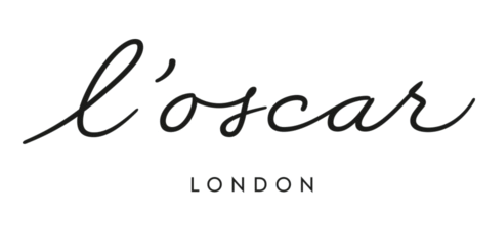
Historically, the blue-chip art market has only been open to a wealthy few. However, the works of art by blue-chip artists are becoming more accessible and affordable.
If you’re considering investing in art, or you’re simply interested in the art world, it’s important to know about the different types of artwork out there, including blue-chip art. That’s what we’re going to be exploring in this blog post.
Read on to learn more about blue-chip art, including examples of blue-chip artists, the blue-chip art market, and blue-chip vs. red-chip art.
Blue-Chip Art: What Is It?
The term ‘blue-chip’ derives from the stock market and refers to a stock (or stocks) in a reputable and profitable business. It was first mentioned by an employee at Dow Jones, Oliver Gingold, back in 1923.
He noticed certain stocks were trading at $200 and over per share and referred to them as ‘blue chip stocks, a reference to the most valuable poker chips. In terms of art investment, blue-chip stocks are considered an attractive option, as there is a history of success behind the business.
Since then, the phrase has been used to refer to stocks that investors have the utmost confidence in and has also become synonymous with the art world. Blue-chip art refers to high-value artworks by well-established artists – artists with a solid reputation for creating art that increases in value over time.
Blue-chip artworks usually sell for the highest price at auction houses and become a more valuable investment with time. Blue-chip art is considered a safe option for art collectors and art investors.
This is because, if an artist’s previous artworks have steadily increased in value over time, investors are more likely to invest in their art, as they would when buying stocks from profitable.
Blue-Chip Art vs Red-Chip Art
Blue-chip art refers to art that has a solid reputation and a history of success. However, red-chip artists are usually upcoming artists or emerging artists who are actively creating work on the primary market as well as the secondary market. Red-chip art is considered the polar opposite of blue-chip art.
Red-chip artists are considered new to the art market and don’t join the art market through the traditional route. They skip art galleries and dealers and instead tend to use the internet (e.g., social media) to promote their pieces. Instead of developing a steady reputation over time, they usually achieve great commercial success quickly.
Red-chip artists sell their work for staggering prices, often at auctions. However, unlike blue-chip art, red-chip art is neither predictable nor traditional. They aren’t prominent names on the primary market but sell their work for between 200% and 500% of their lot in art auctions.
Some red-chip artists include Issy Wood, Hilary Pecis, and more – artists who have a huge online presence and social media following. You can also find red-chip artists that create digital art that can be converted to NFTs.
Examples of Blue-Chip Artists
Blue-chip artwork refers to art created by a group of artists with a history of creating art that increases in value. They are well-known in the art world and have a solid reputation.
Blue-chip artists can include artists who are both actively creating artwork and retired artists, as well as artists who are alive and artists who are dead. Ultimately, blue-chip artists are artists who have cemented a name for themselves in the history of art.
Some popular blue-chip artists include Andy Warhol, Jean-Michel Basquiat, Keith Haring, and Pablo Picasso. The political and satirical street artist Banksy could also be considered a blue-chip artist, as his work has a history of increasing in value.
Some other blue-chip artists include Claude Monet, Qi Baishi, Gerhard Richter, Fu Baoshi, Amedeo Modigliani, and many more household names.
The work of blue-chip artists is high in demand but low in supply, making them the centrepiece of bidding wars at art auctions. Their work consistently performs well in auctions, and the value of their artwork will either increase in value or hold its value despite fluctuations in the economy.
Investing in Blue-Chip Art
Blue-chip artworks are not only available at auction houses but can also be purchased through fractional ownership. This is where you purchase shares among other art investors and become a co-owner of a piece of art. Because of this, the blue-chip art market has become more open to those without millions of pounds in the bank.
The average value of art is steadily increasing, and the Artprice Global Index states that the value of art has risen by a staggering 30% in the last two decades. If you’re new to the art scene, you may wish to start small; investing in art, regardless of the type, carries a risk.
Likewise, you should understand your tastes. Be sure to purchase art that you enjoy. Patience is key with blue-chip art; it is considered a long-term investment, with profit potential building over decades.
It’s also important to know where to invest and when to invest in blue-chip art. This is something we can help with at Grove Gallery. If you wish to kickstart your art portfolio, or simply make some worthy additions to your existing art collection, our team of experts is on hand to help.
You can utilise our art advisory service to determine the best pieces for you, or simply browse the pieces we have on display. With Grove Gallery, you can invest a minimum of £5,000 and take advantage of the help of our dedicated experts.
We can provide you with guidance on the best artwork to invest in for capital growth. With short, medium and long-term investment options, along with growth rates ranging from 4.20% to 11.30%, Grove Gallery is a great place to both browse and purchase art.






